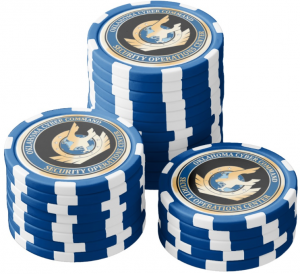![]()
Creating an Employee Recognition Program (ERP) is an interesting challenge. Perform recognition too often, and it feels like a “participation trophy” which everyone will eventually earn. Give employee recognition too infrequently, and it will feel so unobtainable that only the superstars (or worse, only the boss’ favorites) of your organization can earn it. The secret to a good retention program is to make sure that the people doing the exceptional work are recognized. Three keys can help you make sure your next recognition program is effective and efficient.
Tip 1: Look before you leap: include HR and legal
If you haven’t already added representatives from Human Resources and legal to your ERP team, do so immediately. They’ll keep you on the right side of the law and agency policy regarding employee incentives, recognition and any other situations that might arise. In other words, when questions come up like “are employee recognition awards taxable?” they’ll be able to answer (or research and return with an answer to) the question. Make sure they’re vocal and active; do not let them take a back seat in your committee. To ensure their success, position them as review checkpoints for all the key decisions that your committee makes before each one comes to a vote.
Tip 2: Create a formal and an informal recognition program
I am going to fly in the face of convention on this one, but I have found it is incredibly valuable to have a duality of recognition programs: a formal agency-wide program, with attainable goals and understandable rules, and an informal department program that is at the discretion of the team supervisor. This way you can satisfy the two types of employees you may encounter when giving recognition;
- The employee who wants to be publically recognized with:
An “employee of the quarter” picture on the wall
A shiny new trophy or acrylic award
An agency-wide presentation ceremony - The employee who wants to be privately recognized with:
A handshake from the person whom they helped
A presentation with a smaller group of coworkers, or just with their supervisor
A personalized incentive that is unique and valuable to that employee
 For my informal recognition program, I created a customized poker chip with my team’s logo on the front (the actual chip is shown here). This chip can be carried around in my pocket and awarded immediately (one of the best practices of recognition programs) when something amazing happens, or can be presented in a team meeting. After presenting the chip, I follow-up with an email to the entire department on the team member who earned the award and what they did to deserve it. Many winners proudly display “their stack” of chips on their desk, and the program has become a source of friendly competition, to see who can earn the most. Keen readers will notice that, although I use poker chips, they’re all of the same value so that one member’s contribution is not perceived to be superior to another.
For my informal recognition program, I created a customized poker chip with my team’s logo on the front (the actual chip is shown here). This chip can be carried around in my pocket and awarded immediately (one of the best practices of recognition programs) when something amazing happens, or can be presented in a team meeting. After presenting the chip, I follow-up with an email to the entire department on the team member who earned the award and what they did to deserve it. Many winners proudly display “their stack” of chips on their desk, and the program has become a source of friendly competition, to see who can earn the most. Keen readers will notice that, although I use poker chips, they’re all of the same value so that one member’s contribution is not perceived to be superior to another.
Tip 3: Encourage innovation everywhere
Once you have launched your recognition program(s), make sure that you obtain feedback from the people you are rewarding; a recognition program is not effective if the team doesn’t believe in it. Another often overlooked opportunity for feedback is with other supervisors. Encourage them to adopt your informal department program and solicit suggestions for improvement. If other supervisors are participating in the formal recognition program, create a process for making updates, so that you don’t change the rules too often. Otherwise, employees might feel like the formal recognition program is a moving target, and it will lose effectiveness.
When I launched my informal recognition program, I was thrilled to see it was quickly adopted by others to make it even more successful than I had originally envisioned it. My boss, the Chief Information Security Officer for the State of Oklahoma, created his own version of the poker chip, customizing it with his name engraved on the chip edge, and the Oklahoma state seal on the reverse side. Then he improved the program by pledging to award a metal coin to team members who earn and trade-in five of their clay chips. Meanwhile, one of the supervisors on my team is working on making a pink version of the chip, which can be handed out at recruiting events or school programs to help encourage more women to study and work in cybersecurity.
Since the program launch, chips have been awarded to members of the security team and agency, government employees in other states, and even our Governor who recognized our agency as “a model other states are looking at for technology services and cybersecurity.” There’s no doubt that the program has been a huge success, when you see people proudly displaying the chip that they earned for their service to the Oklahoma CyberCommand team.
Daniel Hanttula is part of the GovLoop Featured Blogger program, where we feature blog posts by government voices from all across the country (and world!). To see more Featured Blogger posts, click here.





What unique ideas have you come up with for low-cost recognition?
Great ideas, I especially, like the reminder to obtain feedback about the employee recognition program.
Great ideas — Thanks for sharing!